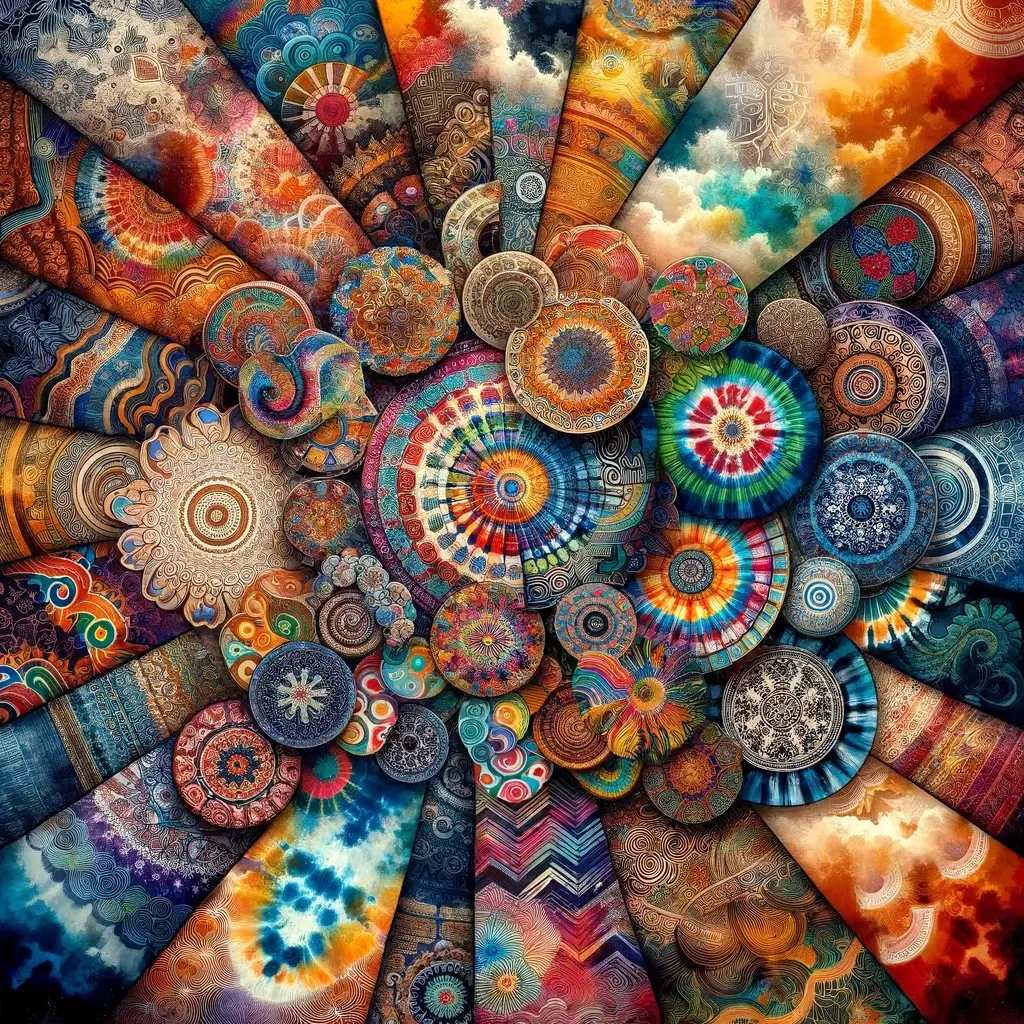Tie-dye, an art form known for its vibrant patterns and kaleidoscopic colors, has a rich history that transcends time and cultures. This ancient technique of dyeing fabric, often associated with the free-spiritedness of the 1960s, actually has roots that delve much deeper into the past, showcasing its enduring appeal and universal language of creativity.
Ancient Beginnings
The earliest records of tie-dye date back to around 500 AD in Peru, where pre-Incan cultures used plant-based dyes to create intricate patterns on cotton fabrics. Meanwhile, in Asia, particularly in Japan and Indonesia, similar techniques were being developed independently. The Japanese form of tie-dye, known as Shibori, dates back to the 8th century and involves various methods of binding, stitching, folding, and compressing fabric to create patterns. In Indonesia, Batik, a method of dyeing cloth using wax-resist, flourished on the island of Java, creating complex and beautiful designs.
Tie-Dye Across Cultures
As tie-dye traversed the globe, each culture infused it with its own unique style. In India, Bandhani, a technique that involves tightly tying fabric with thread before dyeing it, has been a traditional art form for centuries. The resulting patterns are often used in sarees and turbans, signifying cultural and social status. In Africa, particularly in West Africa, tie-dye techniques have been passed down through generations, with each tribe developing its own distinct patterns and colors, often used to tell stories or mark significant life events.
The 1960s and the Rise of Modern Tie-Dye
The 1960s in the United States saw a resurgence and reinvention of tie-dye, largely influenced by the counterculture movement. It became a symbol of rebellion against traditional norms and a way to express individuality and freedom. Rock stars wore tie-dye shirts, and the vibrant swirls became synonymous with the psychedelic era. The ‘Summer of Love’ in 1967 saw tie-dye becoming mainstream, with people of all ages embracing this colorful art form.
Tie-Dye in Contemporary Fashion
Today, tie-dye has secured its place in the world of fashion, evolving from a symbol of counterculture to a recurring trend in high fashion runways. Designers have been experimenting with modern twists to traditional techniques, creating garments that range from boho-chic to elegant and sophisticated. The versatility and adaptability of tie-dye make it a favored choice for both casual wear and high-end fashion.
Sustainable and DIY Fashion
In recent years, with the rising awareness of sustainable fashion, tie-dye has seen another surge in popularity. It’s become a favorite for DIY enthusiasts, allowing people to breathe new life into old garments. This resurgence is not only a nod to its artistic roots but also a commitment to more environmentally friendly fashion practices.
Tie-Dye: More Than Just a Trend
Beyond its visual appeal, tie-dye represents a connection to our ancestors, an expression of creativity, and a testament to the enduring nature of this art form. It’s a celebration of history and a canvas for personal expression.
As we look at the colorful swirls of a tie-dye fabric, we are reminded of its journey through time and cultures, a journey that continues to evolve and inspire. Tie-dye is not just a fashion trend, but a cultural artifact that tells the story of human creativity and the unifying power of art.

